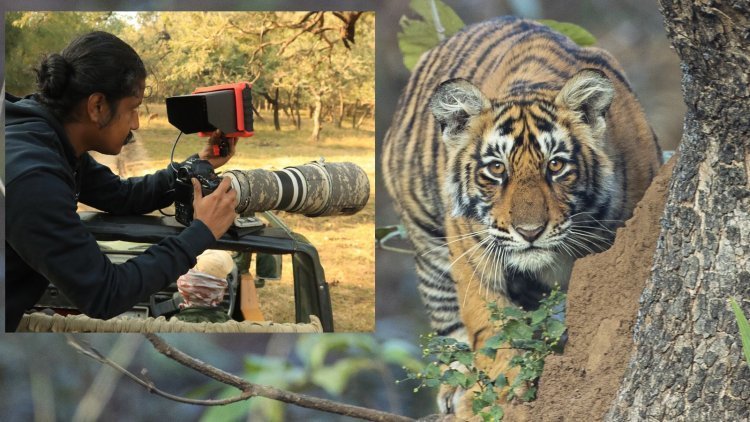Robin Karyeth urges mankind to stop the killing and trafficking of tigers

Robin Karyeth is the director of photography for the ‘save the tiger' documentary series, which focuses on the Anti-Poaching & Wildlife Trade Programme, Wildlife Enforcement Issues, Wildlife Trade Studies in collaboration with State Governments, Tiger Protection Programme Tiger Poaching & Illegal Wildlife Trade Investigations, Support for Tiger Reserves & Other Protected Areas, and Conservation Awareness in Tiger Reserves. The 'Save Tiger' team, led by Robin Karyeth, aims to conserve tigers and educate people about the importance of wildlife conservation. The 'Save Tigers' documentary, with a vision to preserve tigers for future generations of both wildlife and humans, sends a powerful message to mankind to stop the killing and trafficking of tigers.
The tiger as a species supports all forms of life and the natural life support system. However, tigers face enormous challenges today as their wild population declines due to poaching, encroaching human population, and loss of habitat and thus traditional prey. Food webs and ecosystems remain intact in areas where tigers thrive. Tigers are a keystone species that is required for the survival of their ecosystem. Currently, less than 4000 tigers remain in the wild, compared to 100000 a century ago.
According to a survey, forest land now accounts for only 26% of total land area in Asia and the Pacific combined, accounting for roughly one-fifth of the world's forests, or 734 million hectares, according to a 2005 Food and Agriculture Organization report. According to the global tiger initiative, tigers are indicators of the planet's ecological wellness, and a sharp decline in tiger population could lead to an increase in herbivore population, which could potentially destroy forests by consuming the trees and plants, and forests play an important role in preserving the earth in which we live. Millions of people rely on water from tiger habitats, and water is essential for everything from agriculture to energy generation to industry and home use. As a result, protecting tigers entails safeguarding vital freshwater sources and functions.
There is no doubt that the threat exists, but as has been observed, in addition to the ecological services provided by the animal, the tiger also provides direct benefits such as attracting tourists, which generates revenue for local communities. Tigers' aesthetic, ethical, and cultural value have also proven to be critical factors in saving tigers, ensuring the success of tiger conservation in India.
The protection of tigers and their natural habitats benefits thousands of other animals and millions of people. Tiger habitat overlaps with globally important ecosystems, many of which are in Asia's last wilderness. These wildlife and plant life-rich areas house a plethora of critically important goods and services on which millions of people rely every day. Healthy tiger habitats provide fresh water to animals and humans, mitigate the effects of natural disasters, and improve the health of the local community. Long-term support from governments, businesses, and communities is required for tiger conservation and restoration. Protecting tiger habitats, on the other hand, is important for elephants as well, as over 30% of Asian elephant populations live within tiger landscapes.
Robin Karyeth discusses his accomplishments and struggles along the way. He had successfully conducted campaigns to raise villagers' awareness of the importance of tiger conservation in Rajasthan tribal areas, and he had tracked and filmed many tigers in their natural habitat. Fearing death, he spends days in the dense forests tracking tigers' movements and photographing them in the wild. He strives to conserve tigers and educate on the importance of wildlife conservation, with the goal of preserving tigers for future generations of both wildlife and humans. He emphasises capacity building in range states, reducing human-tiger conflict, conducting scientific research on tigers to form conservation strategies, promoting tiger-friendly policies, monitoring tiger numbers, populace patterns, and dangers to tigers and their living spaces as a director of photography in the 'save tiger' documentary series.
There are, however, practical steps that can be taken to help save the tiger and its natural habitats. Concerns can be expressed to policymakers, and decision-makers can be involved in the need for tiger conservation. Along with the tiger trade, poachers can be talked to and persuaded to stop coaching, as well as the use of forest-derived products such as timber and paper. Several guidelines for tiger safaris can also be developed to reduce the pressures of ecotourism. In some cases, photography enthusiasts pursue a career in wildlife, which has proven to be a beneficial method of animal conservation.
Instagram - https://www.instagram.com/robinkaryeth/


















